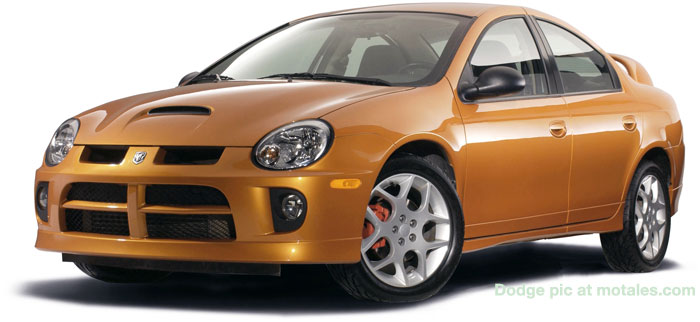
Despite being the second fastest Mopar of its time and one of the quickest sport compacts, the Dodge Neon SRT-4 was cheaper than the four-cylinder Dodge Stratus—under $20,000.
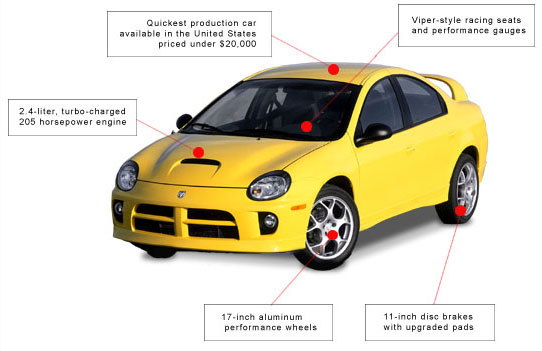
Likely before Daimler took over, executives turned down a supercharged Neon, saying it would only get 3,000 sales per year. In unrelated news, Chrysler de México turbocharged the 2.4 liter engine so it would have more power in high-altitude Mexico City.
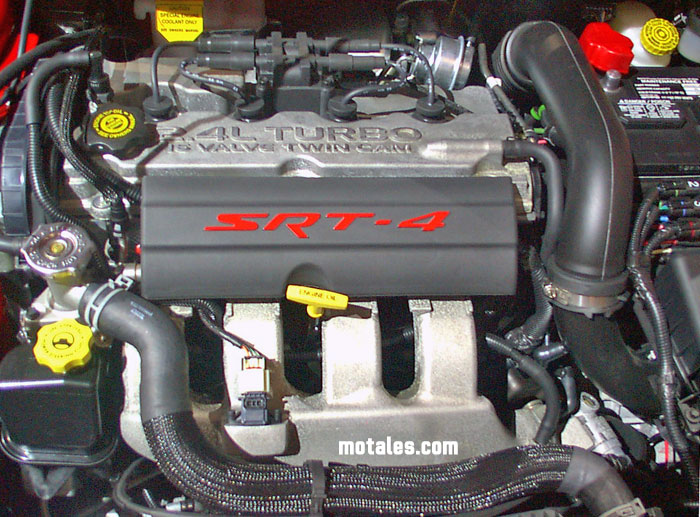
When PT Cruiser team learned about the Mexican engine, they pounced on it—they couldn’t fit a V6 under the hood, but needed more power; and they had the budget to adapt it for their needs. Chrysler’s new high-performance car team heard the PT team’s news, and they proposed using the same engine. Not needing a new engine made the cost dramatically lower—and the hot Neon finally got a green light.
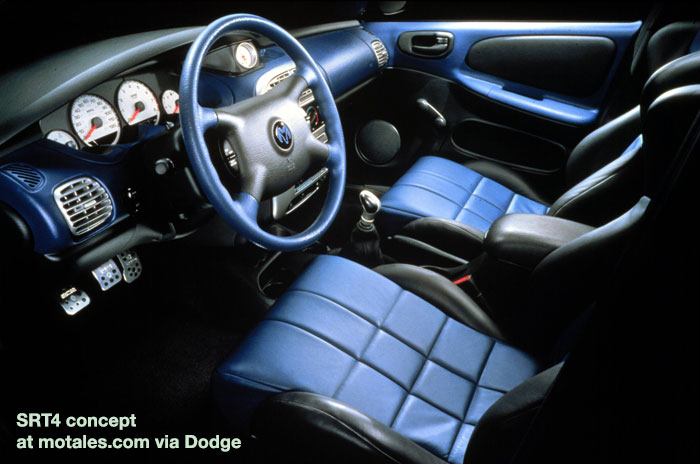
At least, that’s one version of the story. The official story (and both could be true) is that Tom Gale told 26-year-old mechanical engineer Marques McCammon to lead the creation of a Neon with performance and features that matched sport compact cars at the 1998 SEMA show.

Gale assigned young tuners to the project, including powertrain engineer Marc Musial and mechanic Dave Chyz, who had worked on the original Dodge Viper. Mark had experience with forced induction. Building the concept took just four months, working long hours—they logged more than 1,000 after-hours track miles in less than two weeks. Gale had his SEMA car for the 1999 show, and featured it at Los Angeles. When Gale said the production version would need to be in a brighter color, the team knew they had a breakthrough. The second version of the car used production-oriented parts; the team snuck it into Tom Gale’s parking spot one night to speed things up.
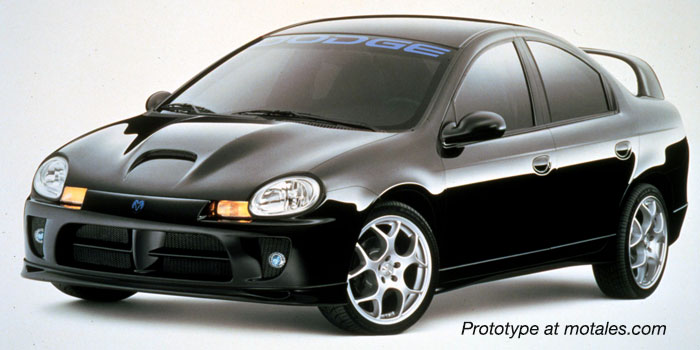
In late 2000, the Executive Committee rejected the car, with a list of reasons. McCammon went to each person with the list, asking them to explain each objection and providing, or asking for, a solution for each. “We just kept going until there was nothing left on the list.” The project was put back on track, and three revisions later, the performance car team* team took over.
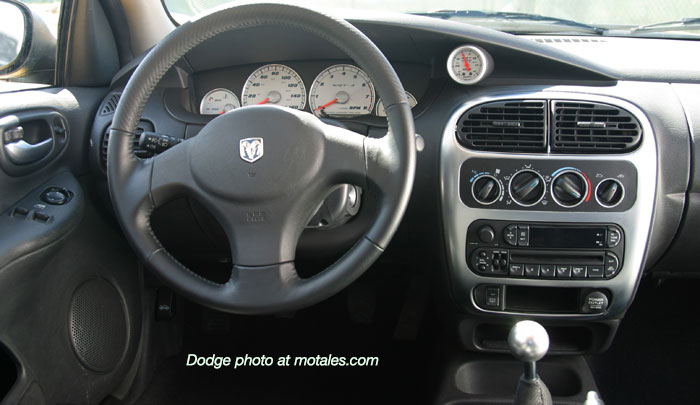
Gale put John Fernandez, who had been in Neon ACR racing and had worked on the Viper, in charge of the production program. Fernandez brought in people who had done grassroots racing or had modified their own cars. The core team included Brad Dotson, who had raced the Neon ACR in SCCA and had been a Neon crew chief; Stephan Zweidler, a former SCCA autocross racer active in the Neon Enthusiast Club; Vehicle Synthesis Engineer Jeff Reece, who had worked on the Dodge Viper GTS-R; engine man Tom Wierzchon (formerly of the Viper GTS-R team); and electrical engineer Judy Willoughby.
* First called Specialty Vehicle Engineering (SVE), then Performance Vehicle Operations (PVO), and finally SRT. SRT started out meaning “Strip, Road, and Track,” which then changed to “Street and Racing Technology,” but most likely they started with the “Super R/T” acronym and justified it later.
When it had arrived in early 1994, the Neon had stunned many by producing 132 hp and 129 lb-ft of torque, standard, with 150 hp on tap from the optional DOHC engine. By comparison, the Honda Civic started at well below 100 hp, and the top Civic Si only produced 125 hp and 100 lb-ft.

In stock car racing (SCCA), the Neon could outrace any car in its class. Yet it had a large interior, decent mileage, and, most incredible, it was profitable as the Cavalier and Escort were still losing thousands of dollars per car (even after allowing for early head gasket and exhaust donut failures). Toyota bought several to figure out how it was done. In all, the Neon was a solid foundation for a true sport compact—which was to be called Neon SRT-4 in press releases, but was, apparently, officially the Dodge SRT-4.

Later SRT owners sometimes forget the Neon SRT-4, but it was an amazing car for its time, and not just because of its Mitsubishi TD04 turbocharger with up to 14 psi of boost.
The SRT-4's 215 horsepower and 245 pound-feet of torque moved it to another class, and those figures were conservative: one group measured 223 hp and 250 lb-ft of torque at the wheels, using a dyno that had tested a 175-hp Sentra SE-R and found just 141 hp. Apex Technology found 248 hp at the wheels.
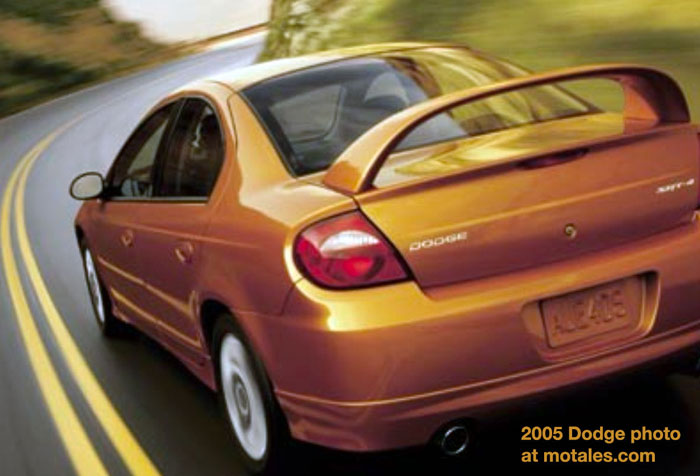
Car and Driver went to 0-60 in 5.6 seconds, finding a top speed of 153 mph in 2003. Sport Compact Car ran the 0-60 a little slower, in 5.8 seconds, but reported a quarter mile of 14.2 seconds in the same year (Dodge itself only claimed 5.8 seconds). In both 0-60 and the quarter-mile, the SRT-4 outran the Porsche Boxter S and Nissan 350Z.
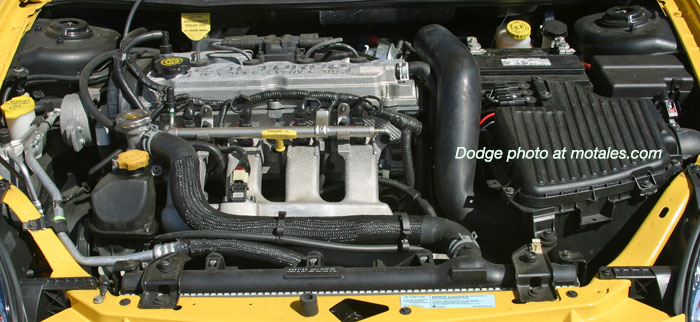
The 2004 Dodge SRT-4 added a Torsen limited slip differential (provided by Quaife), with a price increase of $500. The car also had a new engine controller (NGC3), revised tuning to increase the torque range, and larger fuel injectors, bringing ratings to 230 hp and 250 lb-ft. Finally, Dodge moved to BF Goodrich KDW2 three-season tires, added a sunroof option, and swapped out yellow paint for Electric Blue. The 2005 models added a color, raised the price by $500 (again), and made other minor changes; a new stereo was added to the options list—dubbed Kicker/SRT Livin’ Loud, it had a six-disc CD changer, tweeters, 75-watt, 5.5-inch full-range speakers, 90-watt, 6-inch x 9-inch coaxials, and a 100-watt SVC amplified subwoofer.
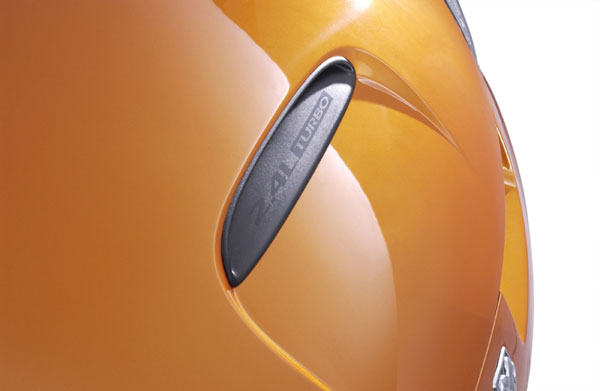
The only transmission was the five-speed manual NVG T850. The exhaust had no muffler, with dual outlets and 2.5-inch polished stainless tips. The throttle body and intake manifold both had higher flow than normal 2.4s; the car also needed a higher capacity clutch and drive plate, with special engine and transaxle mounts.
| Engines | Magnum | SRT |
|---|---|---|
| Displacement | 1995 (2.0) 122 cid |
2429 (2.4) 148 cid |
| Bore x stroke | 3.44x3.27 | 3.44x3.98 |
| Timing | Belt SOHC | DOHC |
| Valves | 16 | 16 |
| Compression | 9.8 | 8.1 |
| Power | 150@6600 | 215@5400* |
| Torque | 135@4800 | 245@ 3200-4200* |
| Redline | 6816 | 6240 |
| Fuel | 91 oct. | 91 oct. |
| EPA MPG | 27/33 | 22/30 |
* 230 hp and 250 lb-ft after 2003
Program manager Marques McCammon wrote that peak torque was continuous from 2000 rpm to 4800 rpm, and that spring rates were a little firmer, “especially in the rear, so that we can lessen the rear end dive. That allows the car to remain level and even drop down a little in the front to get you off the line faster.”
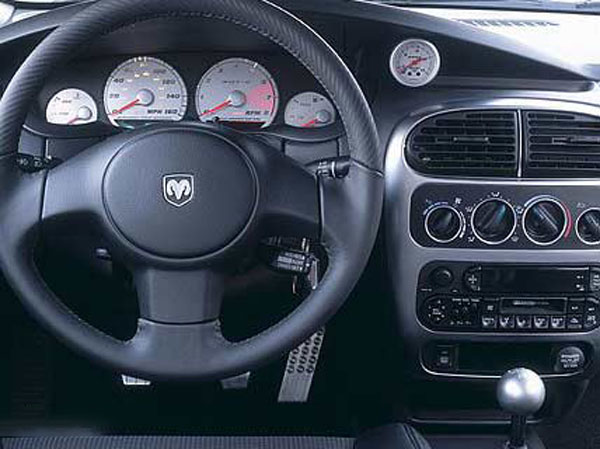
Suspension upgrades included equal-length halfshafts, 17-inch wheels with 50-profile tires, updated front and rear struts and springs, beefier sway bars, updated knuckles, and a unique K-member. Omni GLHS veteran John Fernandez said they wanted “a nice, balanced feel through the corners without an overabundance of body roll.” The SRT-4, he wrote, had “a high dose of power that is also highly controllable.” Torque steer was notably less of a problem than in the old 1991 Spirit R/T, which had produced a bit less peak power.
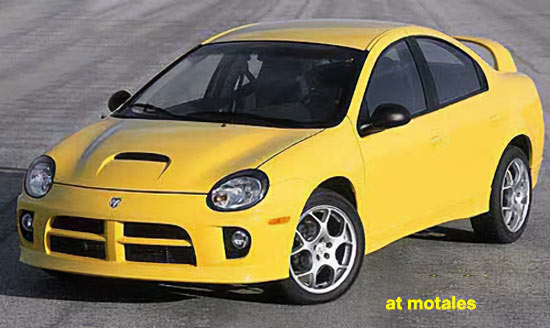
Safety features included larger calipers and 11-inch rotors on the four-wheel antilock disc brakes; the pads were upgraded to help the SRT-4 stop from 60 mph to zero in less than 120 feet.
The company considered an Infinity sound system with a subwoofer, but cost and 30 pounds of weight made that less palatable; instead, they used the next best CD sound system. Other comforts included air conditioning, power locks and windows, remote keyless entry, and a lighting package.
A series of 2005 Commemorative Editions, numbered from 1 to 200, echoed the Viper ACR with white bodies and blue stripes, with blue stitching on the seats and steering wheel, number plaque, embroidered floor mats, and a small book.
The SRT-4 blew away most competitors, including the much pricier Audi TT, Toyota Celica, and Acura RSX, while being far more practical or comfortable than some (especially the Audi). Acceleration was strong but smooth, from any engine speed. The car was easy to drive and could handle bad roads. The engine was loud, with a rumbling, Camaro-style sound.
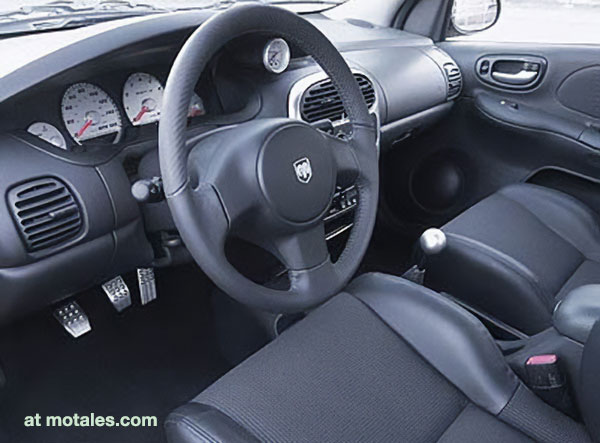
The SRT’s handling was quite good, and the ride was not as harsh as in the Celica, RSX, TT, and Camaro. The good-sized rear seat and trunk made it quite practical, too, unlike custom-designed sports cars. The interior was nicely done, and construction was tight and solid. The seats were supportive, with large bolsters that interfered a bit with entry and exit, and limited the size of the occupant, but kept drivers stable in hard turns. Seats were covered in cloth, witih leather not available, to keep people in place and to keep costs down.
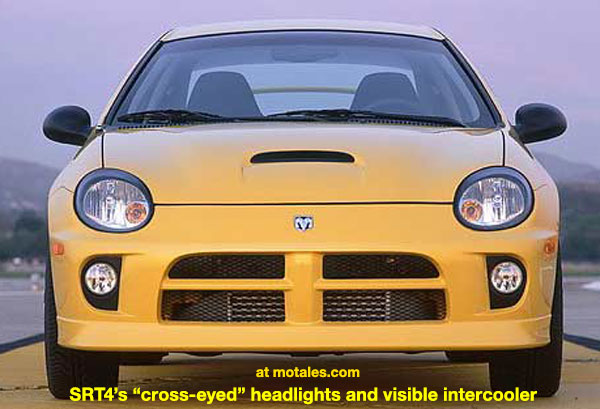
Styling was credited to Eric Stoddard, Brandon Faurote, Julie Dolan, Lance Wagner, Donald Renkert, David McKinnon, and Khashayar Honarkhah; they made the SRT4 look different by replacing the front and rear fascias, spoiler, and hood, and adding sill-mounted ground effects and a hood with an integral air intake. The engineers left the aluminum intercooler visible behind the lower grille.
The SRT-4’s wheels were taken from the 2000 concept car. They were designed to have an aftermarket look, with tape-on weights, fuller width rim sections, and a spoke pattern for airflow to the brakes. Tires were 205/50R17 83V Goodyear Eagle RS-As, compared with the R/T’s P195/50R16.
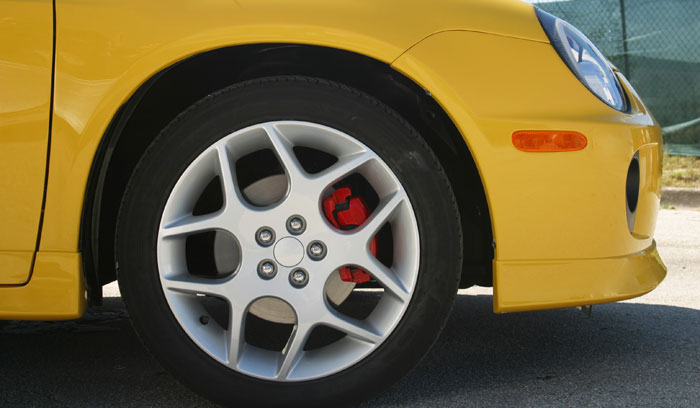
There was minimal badging, all in satin silver. The four paint colors at launch were Solar Yellow, black, Flame Red, and Bright Silver Metallic.

The textured seat cloth increased grip; the three-spoke steering wheel made the gauges, in silver with stain ring accents, more visible. The aftermarket-style turbo boost/vacuum gauge saved money by avoiding a cluster redesign.
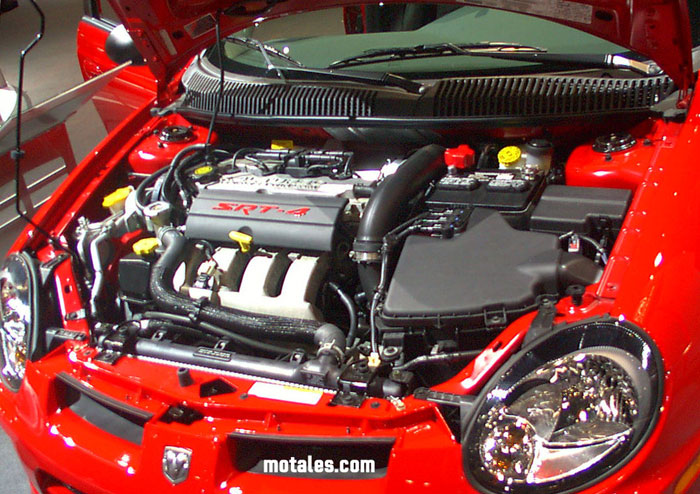
The Neon SRT-4 was eventually replaced by the Caliber SRT-4. That car used a completely different 2.4 liter engine, rated at 300 horsepower—but the heavier Caliber was not quite as good a platform for it, and the Neon SRT-4 tended to beat its successor in numerous independent tests.
Like the 2.0 Neon engines, the 2.4 had rocker arms with roller followers, hydraulic lash adjusters, and returnless sequential multiple point fuel injection. Both performance 2.0 and the 2.4 turbo could be run on regular octane fuel, but premium was preferred. Gearing ranged from first (3.65:1) to fifth (0.76:1), with an overall top gear of 3.20:1 and a final drive of 3.53:1.
| Wheelbase | 105.0 |
|---|---|
| Track | 58.0/58.1 |
| Length | 174.4 |
| Width | 67.4 |
| Height | 56.0 |
| Ground clear. | 6.1 |
| Weight | 2,900* |
| Drag (cD) | 0.35** |
| Legroom (F+R) | 77.0 |
| EPA cargo volume | 13.1 |
| Turning diameter | 38.9 ft |
| Weight F/R | 63/37 |
* Reportedly 2,880 for 2003.
** Listed at 0.37 in 2003. The spoiler and intake increased drag compared with stock Neons.
Also check out the original Challenger SRT8
Copyright © 2021-2025 Zatz LLC • Chrysler / Mopar car stories and history.
YouTube • Editorial Guidelines • Videos
Tailfins Archive • MoTales on BlueSky